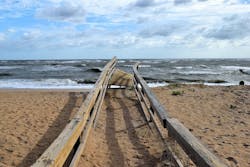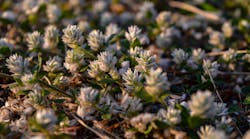In partnership with NASA and Florida International University, a study led by assistant professor David Lagomasino, published in the July edition of Nature Communications, focused on the effects of Hurricane Irma.
This hurricane struck Florida in 2017, damaging the state's mangrove forests, reported Science Daily. Forests suffered dieback as well.
According to Lagomasino, 11,000 hectares showed evidence of complete dieback following the storm. The research team studied satellite and aerial footage of the region and were able to pinpoint potential reasons for such dieback.
"There have been significant storms in the past that have led to damage, but Irma seems to have caused one of the largest areas of dieback, at least in the satellite record," Lagomasino said. "Human-made obstacles, as well as natural changes in topography, can impact the flow of water through an area. Things like roads and levees can restrict or stop the flow of water between areas that were once connected.”
According to the research, human-made barriers can lead to an increase in how long water stays on the surface, reported Science Daily. This means increased saltwater ponding may occur when storm surge is high, but barriers can obstruct water flow.
According to Lagomasino, Florida can be useful to North Carolina and other coastal regions.
“In other words, low elevation areas that are disconnected or do not have the capability to drain after being flooded are more susceptible to long-term damage,” Lagomasino said, reported Science Daily. "This is useful for understanding the resilience of coastal forests and wetlands in North Carolina and may also be important in predicting urban areas that may also be less resilient to these extreme events."
The study suggested changes including:
- Adding new metrics that account for storm surge and geology to the traditional hurricane rating system;
- Establishing field research stations in low-lying areas to help identify underrepresented physical and biological processes in vulnerable regions;
- Performing regular coastal remote sensing surveys to monitor drainage basins and improve water connectivity; and
- Improving freshwater flow to help create new tidal channels.
According to Lagomasin, the biggest takeaway from the research is that intense winds do a lot of damage during hurricanes, but the extent of the damage does not necessarily coincide with the ability of the system to recover.


